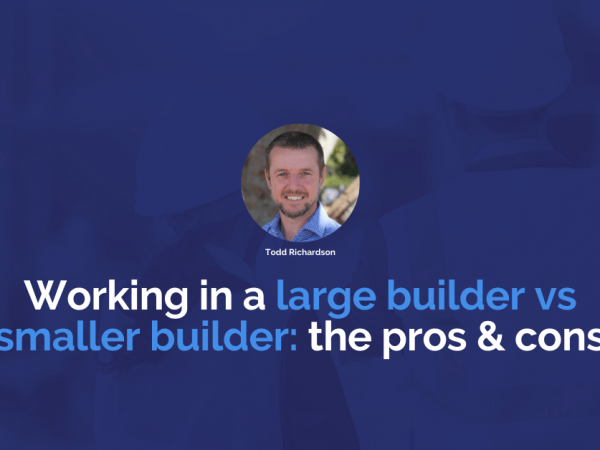If you’ve been working for a builder for a while, you might be thinking about making a change. Perhaps you’re seeking an 8-to-5 role that offers better work-life balance and less stress. Or maybe after working closely with client-side project managers, you’re intrigued by how they operate and want to explore that career path yourself.

But, before taking the leap, it’s essential to understand what life as a client-side project manager entails. Is the grass really greener, or just a different shade? Having recruited client-side project managers for years, we’ve seen both sides of the fence and can share insights into the pros and cons of making the transition.
What does a client-side project manager do?
As a client-side project manager, your role shifts significantly from that of a head contractor. Instead of being hands-on with project delivery, you’ll represent the client’s interests, making key decisions on their behalf. You’ll manage the builder’s delivery team, set project goals, create schedules, and oversee the entire project lifecycle—from implementation to handover.
Your focus becomes broader, considering not just the execution of the project but also understanding the client’s objectives and ensuring those are met. However, there are a few important factors to consider before deciding if this move is right for you.
1. Salary variations
One of the main concerns when moving to the client side is pay. Generally, roles with builders tend to offer higher salaries. There’s often a notable difference in earning potential. If you’re early in your career, the impact may be less significant, but if you’re further along and salary is your driving factor, this is somethingto carefully weigh up.
2. Shifting your focus
Working for a builder, you’re used to being deeply involved in day-to-day tasks involved in delivering a project. Transitioning to the client side, your focus will shift from hands-on delivery to overseeing the construction program. You’ll no longer be the one dealing with and making decisions on how things are built but will instead manage others to do so.
Think of it as moving from being a chess piece to a chess player. You’ll coordinate the actions of others, making sure the project stays on track with the client’s broader goals.
3. Building relationships is key
Client-side roles involve a lot of connecting with different people and keeping everyone in the loop. Communication, negotiation, and keeping relationships strong become central to your role. If you thrive in environments where clear and effective communication is essential, you’ll likely do great. However, if you’re more introverted or uncomfortable in these scenarios, you might find this aspect of the job challenging.
4. Cultural differences
Moving to the client side means transitioning from a booted onsite environment to a more corporate setting. The culture shift can be noticeable, as expectations and interactions tend to be more formal. While most professionals adapt quickly, it’s an adjustment that’s worth being prepared for.
5. Diverse project work
One of the attractions of client-side roles is the diversity of projects. You could be managing a high-value development one day and overseeing several smaller projects the next. This variety can be stimulating, but it’s not for everyone. If you prefer consistency in your day-to-day work, the ever-changing nature of client-side project management might not be the best fit.
So, is the grass greener?
The answer depends on your personal and professional goals. Understanding your motivations and what you hope to gain from the move is crucial to making it a successful transition.
At the end of the day, the grass isn’t necessarily greener – it’s just a different type of grass. Consider what’s most important to you in your next role, and weigh the trade-offs accordingly. If you’re ready to explore client-side opportunities, we can help you find the right fit and guide you through the transition.
Looking for your next construction job? Search our current construction roles here, or to chat with our team about securing your next opportunity, get in contact with us through our Contact Us page.
Receive our updates straight to your inbox




